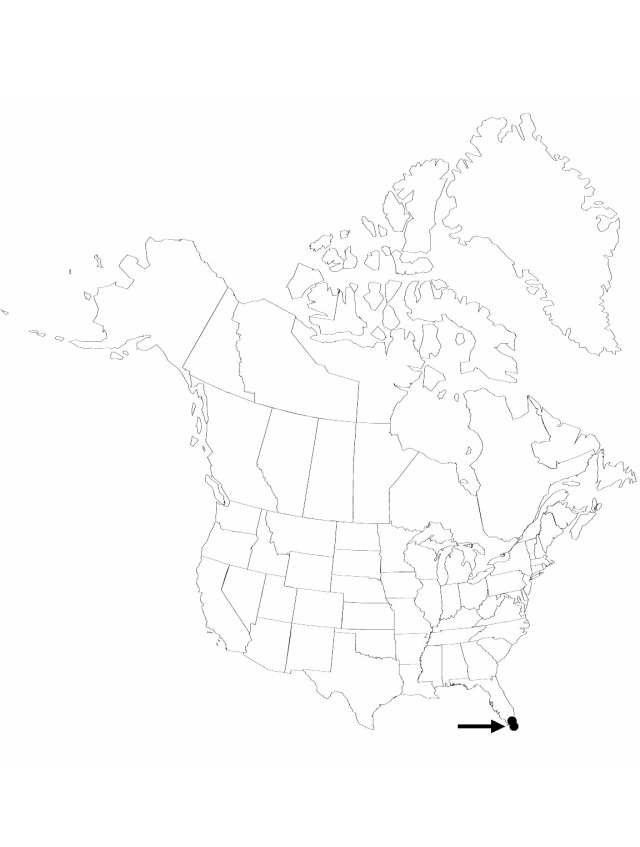Pseudophoenix sargentii subsp. sargentii
Stems 4–8 m, smooth. Leaves 1.5–3 m; segments inserted on rachis at divergent angles, usually in groups of 3–5, waxy gray-green abaxially. Inflorescences arching, 7.5–12 dm. Fruits 1–2 cm diam. 2n = 34.
Phenology: Flowering summer.
Habitat: Rocky, calcareous soil of coastal hammocks and scrub
Elevation: 0–10 m
Distribution

Fla., Mexico, Central America (Belize).
Discussion
Pseudophoenix sargentii subsp. sargentii also occurs on the coast of the Yucatan Peninsula. The other subspecies, P. sargentii subsp. saonae (O. F. Cook) Read, is thought to comprise two varieties distributed in Cuba, the Bahamas, and Hispaniola (R. W. Read 1968). Read now thinks that perhaps none of these subspecies or varieties should be maintained (C. Lippincott 1992).
For an excellent account of the history of this palm in the Florida Keys and modern efforts to restore this species to habitats that it originally occupied, see C. Lippincott (1992).
Selected References
None.